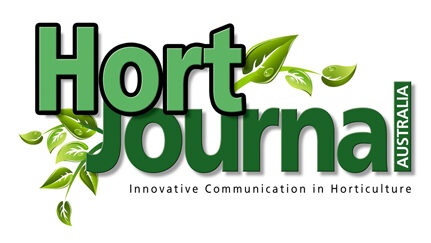
Plant nutrients: Where from? Where to?
By John Fitzsimmons
Almost every day, horticultural and agricultural enterprises think about, talk about and seek out plant nutrients – usually as ‘fertiliser’. But beyond comparing, selecting and applying nutrient products, how often do we consider their natural and commercial sources and the longevity of their supply?
Our knowledge and understanding of plant nutrient needs and fertilisers is relatively young, less than 400 years, and the industrial mining and manufacturing of mineral fertilisers are not yet 200 years old! Our scientific knowledge of plant nutrition interactions with Australian soils is significantly less, less than a century.
Especially over recent years, the cost and reliable supply of plant fertilisers have been major concerns and discussion topics in most plant industries. This is perhaps most keenly felt by food producers because there is often a direct relationship between fertiliser inputs and yields (outputs) on which returns (income) are based. A similar situation exists in the grazing and intensive animal industries where fodder for livestock, reflected in its cost of production and volume available, is a major factor in profitability.
Australia’s inherent broadscale need for extra phosphate inputs in pasture and cereal production is one example; the universal demand for nitrogen in various forms is another. Notably, Australia (in particular) did much to decimate the island of Nauru, which was a huge source of phosphate rock; it now appears we have substantial on-shore sources still in the ground. However, what about the ornamental plant sector, where it could be debated? Plant genetics, (artificial) growing environments, and grower expertise and marketing are as vital as nutrient inputs to the ultimate value produced.
Nevertheless, much of the greenlife industry has also come to value seaweed and other biological sources of valuable and useful nutrients. Seaweed-based products, fish fertilisers, blood and bone as a recovery by-product, such sources may appear safe for now. Still, much of our fertiliser requirements are met as products based on commodity minerals – raw and processed, from a worldwide network of sources. With the current “geo-political turmoil,” can we count on a reliable and affordable supply of necessary nutrients in the future?
While some local nutrient sources may continue to be supplied at adequate volumes, their economic value could vary significantly as environmental circumstances or labour costs, as examples, change. So, at the moment, where does the world get its plant nutrients? Here is a very broad sweep of the big picture.
While around 100 chemical elements are naturally occurring, we are taught that only 13 (or 12, or 15) are considered vital for plant growth and reproduction. However, plant nutrients are said to represent only a very small fraction of the total plant biomass. And, compared to plant volume, they are sourced from a relatively huge soil volume.
(Historical research now suggests there are 17 ‘essential’ nutrients, but only a few plant species require more than 14 or 15. While more nutrients may be identified, the discussion has currently settled on “plants do not need other elements at a concentration above the lowest level so far measured”.)
Australia’s “old” soils, due to a relative dearth of recent geological activity that produces “new” soil and nutrients, are therefore broadly nutrient-poor. So much for growing in-ground under naturally occurring conditions! Obviously, much of our greenlife industry’s production is in pots rather than in-ground (plus some soilless). Hence, nutrients supplied in potting mix ingredients and added fertilisers are critical for plant growth.
However, it has also been established that a plant’s genetics are also a major factor in how readily or not it can effectively access and utilise available nutrients. This is of major importance, especially for broadacre agricultural crops. Native species can usually survive better without supplementary nutrients.
World use summary
While it doesn’t reflect the greenlife sector’s use, especially indoors or under cover, the world’s consumption of mineral fertilisers has more than doubled in the last decade or so to about 200 million metric tonnes – almost doubling since 1980. Nitrogen fertilisers account for a bit more than half that total. Phosphorus and potassium account for most of the balance, roughly 25% and 20%, respectively. This represents about 140 metric tonnes of fertiliser per arable hectare globally. The volume use trend was fairly consistently upward from the 1960s until 2020 when a slight downturn (about 8%) was observed.
About 80% of world mineral fertiliser consumption is attributed to just four countries(!) namely China, the USA, India, and Brazil.
Australia’s fertiliser usage per hectare of arable land peaked at about 120kg in 2021 (also) dropping about 10%. Notably our area of agricultural land has been on a downward trend for about 50 years, about 30% less than what we registered in the 1960s.
There are still large areas of the world where no or very little fertiliser is used.
Most mineral fertilisers are ‘mined, refined, or manufactured’, and a wide range of descriptors are used, including ‘synthetic, mineral, inorganic, artificial or chemical’. Note should be taken of the presence/content of potentially harmful elements (e.g. cadmium) that could have impacts on downstream, impacts on plant growth and/or animal/human consumption.
Many fertilisers are derived from natural deposits and made more useful for plants or separated from useless or harmful components (see above). Most nitrogen fertilisers are produced artificially, although their N is derived from atmospheric air, and their components, such as nitrate, ammonia, or urea, are identical to the substances normally occurring in soils and plants. The primary source of all P in fertilisers is phosphate rock (PR), a natural mineral that has to be mined, refined and made soluble to be useful (Source: FAO).
Notably, most “organic” fertilisers are bypassed in statistics because their nutrient content/s are often much lower than ‘artificial’ fertilisers, and so they are not ‘counted’ as such. Interesting, but perhaps a reflection more of our ‘industrial farming’ thinking.
All nitrogen in fertilisers originates from the nitrogen gas in the atmosphere, which contains 79% N (by volume). Above every hectare of land at sea level, there are 78,000 tonnes of N – this is the N that is converted into ammonia in fertiliser factories and the N that is fixed biologically into ammonium by various micro-organisms. Thus, there are abundant supplies of N for the production of nitrogenous fertilisers. Therefore, N fertiliser production is primarily a matter of available energy mainly derived from oil or natural gas reserves. (FAO)
Phosphatic fertilisers contain P mainly in the form of calcium, ammonium or potassium phosphates. The phosphate in fertilisers is either fully water soluble or partly water-soluble and partly citrate soluble, both being considered plant-available. Citrate-soluble P dissolves slowly and is relatively more effective in acid soils. The primary source of phosphate in fertilisers is the mineral apatite (primarily tricalcium phosphate). Phosphate is a relatively scarce raw material. Global reserves (actual and probable) with more than 20% P2O5 have been estimated to last 100 to 200 years, depending on consumption rates. One source of future phosphate production is offshore deposits, which occur on many continents. (FAO)
Potash (potassium K) fertilisers are predominantly water-soluble salts. Canada and the countries of the former Soviet Union have 90% of known potash reserves. World consumption of K through fertilisers was 23.3 million tonnes K2O (2002–03), accounting for about 16% of the total nutrient consumption through fertilisers. Just three countries, the United States of America, China, and Brazil account for 50% of total potash consumption.
Unusually, potash consumption exceeds phosphate consumption in large-consuming countries such as the USA, Brazil and France, while it is well below phosphate consumption in India and China. Globally, potash consumption ranges from negligible in many areas up to 107 kg K2O/ha of arable area (Republic of Korea) against a global average of 16.6 kg K2O/ha. (FAO)
Potassium chloride (KCl), also called muriatic of potash (MOP), is the most common K fertiliser. It is readily soluble in water and an effective and cheap source of K for most crops. However, as there may be some salinity damage with high K applications, particularly as MOP (especially in gardening), slow-acting K fertilisers have been developed.
Formulations containing sulfur in elemental form, the most concentrated source of S, are increasingly being used as S fertilisers. Elemental S must first be oxidised to sulphate in the soil by bacteria (Thiobacillus thiooxidans) before it can be absorbed by plant roots. The rate of oxidation depends on particle size, temperature, moisture, degree of contact with the soil, and level of aeration. Raw materials for calcium fertilisers are abundant.
For more accurate and convenient application of fertilisers, liquid fertilisers offer some advantages, including no need to lift or transport bulk bags. Pumping and spraying reduce manual handling and can increase dosage control. Variants include:
- Fertiliser solutions: clear liquids of low to medium nutrient content (usually up to 30%)
- Suspensions: saturated solutions with stabilised crystals (nutrient content usually up to 50%).
For several reasons, the importance of fertilisers containing micronutrients has been increasing over the years. Decades ago, at medium yield levels, fertilisation
with micronutrients was restricted to the recovery of acute visible deficiencies
that occurred in some areas of sandy, metal-fixing, over-limed or just poor soils.
On most soils the natural soil supply of micronutrients has been adequate. However, the situation has changed considerably with intensive cropping and high yields. For some micronutrients, there are now increasing reports of insufficient soil supplies to meet increased crop requirements, affecting both yield and quality. Increasingly, micronutrients have become yield-limiting factors and are partly responsible for the decreasing efficiency of NPK fertilisers. Therefore, standard NPK-based fertilisation must often be supplemented by the deficient micronutrients. Of the six practically relevant micronutrients, deficiencies of Fe, Mn and Zn tend to occur more in neutral to alkaline soils and under arid and semi-arid conditions. A deficiency of B and Cu is more likely to occur on acid soils in humid climates, although large-scale B deficiencies have been reported. (FAO)
Looking forward, the future supply of plant nutrients faces challenges from climate change, soil degradation, and population growth. A more assured nutrient supply requires focusing on improved nutrient use efficiency, with a special focus on genetic development, and more sustainable growing practices, including more optimal nutrient applications.
